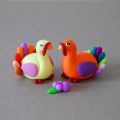Everything begins simply, trite and unnoticed. First, it is difficult for a child to hold a spoon or fork. Then it becomes difficult for him to hold a pencil or pen correctly. When you trust him with scissors, it turns out that cutting paper is also a whole problem. Further more. Closer to the school it becomes clear that it is difficult for a child to reproduce letters on paper. Problems with punctuation - by itself. And almost every word is a mistake. Photo:GettyImagesAt the same time, the child reads fluently - better than his peers. But writing... Crooked lines, crooked letters. The baby cries and worries about not being able to write as quickly and accurately as his classmates. He will try very hard, puff over every word, but there will still be a bunch of mistakes in the text, the letters will look the wrong way, and he will forget about punctuation marks altogether. This is not a reluctance to learn, no. This is a disorder called dysgraphia. As the Scary Mommy portal notes, scientists call this affliction the disease of the century. Dysgraphia is one of the varieties of dyslexia, when a person has difficulty mastering written speech. It is difficult for a child to write, but not to read or speak. His general level of intelligence may not just be at the level of his peers, but even higher. But he is unable to understand what punctuation is. It is difficult to diagnose dysgraphia. And people rarely go to the doctor just because the child writes poorly. However, doctors say that dysgraphia affects 5 to 20 percent of schoolchildren who have problems with writing. Dysgraphia is treatable. Doctors advise working with the child more, focusing on games that include tasks related to letters: you can mold letters from plasticine, connect dots, copy letters from samples. This is the very first stage of therapy: the child must first learn to draw letters, and then write them. Only then can you move on to spelling. In addition, experts advise writing in block letters, not capital letters - at first, clarity is important. In addition, this way the child will understand which way the letters "look" and will stop turning them over, as often happens with the letter I. You can even type on a computer. In general, there is nothing supernatural in correcting dysgraphia: no medications or specific therapy will be needed. But you need a lot of patience. Therefore, try to understand that the baby is really not to blame. He is trying. It's just the way his brain works. And most importantly, praise your child for everything he did right. Even for the simplest, most trivial, but correctly written short words.
Photo:GettyImagesAt the same time, the child reads fluently - better than his peers. But writing... Crooked lines, crooked letters. The baby cries and worries about not being able to write as quickly and accurately as his classmates. He will try very hard, puff over every word, but there will still be a bunch of mistakes in the text, the letters will look the wrong way, and he will forget about punctuation marks altogether. This is not a reluctance to learn, no. This is a disorder called dysgraphia. As the Scary Mommy portal notes, scientists call this affliction the disease of the century. Dysgraphia is one of the varieties of dyslexia, when a person has difficulty mastering written speech. It is difficult for a child to write, but not to read or speak. His general level of intelligence may not just be at the level of his peers, but even higher. But he is unable to understand what punctuation is. It is difficult to diagnose dysgraphia. And people rarely go to the doctor just because the child writes poorly. However, doctors say that dysgraphia affects 5 to 20 percent of schoolchildren who have problems with writing. Dysgraphia is treatable. Doctors advise working with the child more, focusing on games that include tasks related to letters: you can mold letters from plasticine, connect dots, copy letters from samples. This is the very first stage of therapy: the child must first learn to draw letters, and then write them. Only then can you move on to spelling. In addition, experts advise writing in block letters, not capital letters - at first, clarity is important. In addition, this way the child will understand which way the letters "look" and will stop turning them over, as often happens with the letter I. You can even type on a computer. In general, there is nothing supernatural in correcting dysgraphia: no medications or specific therapy will be needed. But you need a lot of patience. Therefore, try to understand that the baby is really not to blame. He is trying. It's just the way his brain works. And most importantly, praise your child for everything he did right. Even for the simplest, most trivial, but correctly written short words.

Making Money with Desserts: Success Stories
Evgeniya Polischuk (Fedutinova) instagram:@evgeniyafedutinovavk.com/janeshomebaking– It all started with baking for family and friends. Gradually, I started posting photos of my baked goods on Instagram – and orders started coming in. I made my first custom-made cake on October 13, 2014, and a little earlier I started making macaroons and cupcakes. You could say that the business “found me”, I am very […]

Soups are cold recipes with photos
Cold cucumber soup with yogurt and lemonsorbet from the chef of the restaurant La Taverna Alexander Zhurkin Photo: Getty Images Ingredients: Plain yoghurt – 125 g Cucumber – 150 g Lemon/lime sorbet – 50 g Cocktail shrimp – 24 g Fresh ginger juice – 1 g Lime juice – 5 g Fresh orange juice – 5 g Parsley – 1 g Pink pepper – 1 g Watercress – […]

barbeque kebab
Pork tenderloin in glaze Photo:Dmitry Bayrak/dbstudioPreparation time: 20 minutes + marinating time.Calories: 454 kcal per serving.For 4 servings: 4 pork tenderloins (approximately 300 g each), 1 onion, 2 cloves of garlic, 1 tsp. lemon zest, 1 tsp. lemon juice, a pinch of ground cumin, coriander and turmeric, 1 tbsp. vegetable […]

Pierre Duacan: dietary recipes: Ducane diet
Beetroot soup Photo:Season’S, Luxury Hotels RepresentationYou will need:· Boiled beetroot – 60 g· Fresh cucumbers – 20 g· Red radish – 20 g· Green onions – 10 g· Egg – 1 pc.· Drinking mineral water – 200 g· Salt – 1 gPreparation:· Boil the egg and beetroot.· Grate the cucumbers, radish and part of the beetroot. Put everything […]





